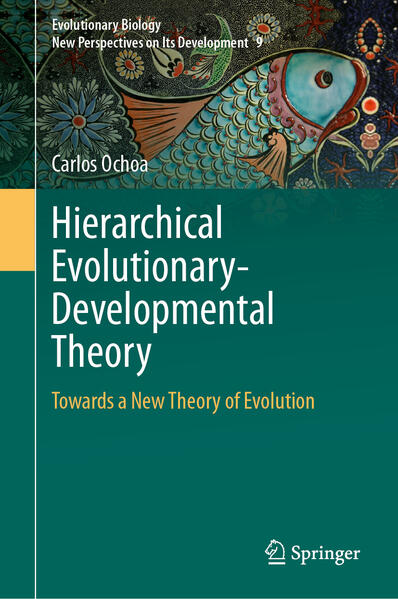
Zustellung: Do, 19.06. - Di, 24.06.
Versand in 1-2 Wochen
VersandkostenfreiBestellen & in Filiale abholen:
This book introduces a new evolutionary model called Hierarchical Evolutionary-Developmental Theory or H-Evo-Devo Theory. This theory proposes that the organism s internal properties reflect entities that are highly integrated in developmental terms that evolve hierarchically. In other words, it attempts to demonstrate that developmental constraints operate at different scales, producing distinct states of morphological stability reflected as subspecies, species, higher taxa, and homologues, all representing units of evolution. In addition, it reintroduces the concept of the organism in evolutionary biology, supports a strictly macroevolutionary view, and contemplates alternative evolutionary rates, processes, and mechanisms at different levels: microevolution, macroevolution, megaevolution, and modular-evolution. In short, this book establishes a new synthesis between systematics, morphology, and evolution, suggesting a significant shift in evolutionary thought.
The book comprises:
1. A proposal for a new theory of evolution and systematics: The H-Evo-Devo Theory reinterprets the concepts of subspecies, species, higher taxa, and homologues, proposing that the phylogenetic tree is built on a hierarchy of types, developed from the top-down, in contrast to the traditional bottom-up approach.
2. A novel hierarchical perspective that reveals the underlying mechanisms acting on the patterns of divergence, stability, and extinction of the units of evolution.
3. A resolution to the ontological problem regarding units of evolution (e. g. , the reality of species and higher taxa).
4. A historical narrative that focuses on the development of a hierarchy theory of evolution grounded in the type concept and the significance of an organism-centered perspective.
5. A challenge to traditional frameworks that have sought to establish hierarchies in an evolutionary context.
6. A challenge to classical evolutionary statements such as gradualism, punctuated equilibrium, the extrapolationist premise, and geographical models of speciation.
This book is written for those who feel that radical change is needed in evolutionary theory, offering them a viable alternative.
Inhaltsverzeichnis
Chapter 1: Introduction: Hierarchical Evolutionary-Developmental Theory (H-Evo-Devo Theory). - Part 1: The History of the H-Evo-Devo Theory. - Chapter 2: The Role of Typology and Constraints in the Formation of the Natural System. - Chapter 3: Hierarchical Evolutionary Synthesis. - Part 2: Hierarchies and Evolution. - Chapter 4: Challenging Traditional Hierarchies of Evolution. - Chapter 5: The Structure of the H-Evo-Devo Theory. - Part 3: The Units of Evolution: Philosophical Criteria. - Chapter 6: Criteria for Recognizing Units of Evolution. - Chapter 7: Units of Evolution (I): Subspecies and Species. - Chapter 8: Units of Evolution (II): Higher taxa and Homologues. - Part 4: Challenging Evolutionary Statements. - Chapter 9: Patterns and Rates: Challenging Gradualism and Punctuated Equilibrium. - Chapter 10: Divergence and Levels: Challenging Allopatric Speciation and the Extrapolationist Premise. - Part 5: The Levels of Evolution: Biological Processes. - Chapter 11: Levels of Evolution (I): Microevolution and Macroevolution. - Chapter 12: Levels of Evolution (II): Megaevolution and Modular-Evolution.
Produktdetails
Erscheinungsdatum
23. Mai 2025
Sprache
englisch
Seitenanzahl
424
Reihe
Evolutionary Biology New Perspectives on Its Development
Autor/Autorin
Carlos Ochoa
Verlag/Hersteller
Produktart
gebunden
Abbildungen
XII, 410 p. 58 illus., 24 illus. in color.
Gewicht
797 g
Größe (L/B/H)
241/160/29 mm
ISBN
9783031887222
Entdecken Sie mehr
Bewertungen
0 Bewertungen
Es wurden noch keine Bewertungen abgegeben. Schreiben Sie die erste Bewertung zu "Hierarchical Evolutionary-Developmental Theory" und helfen Sie damit anderen bei der Kaufentscheidung.









